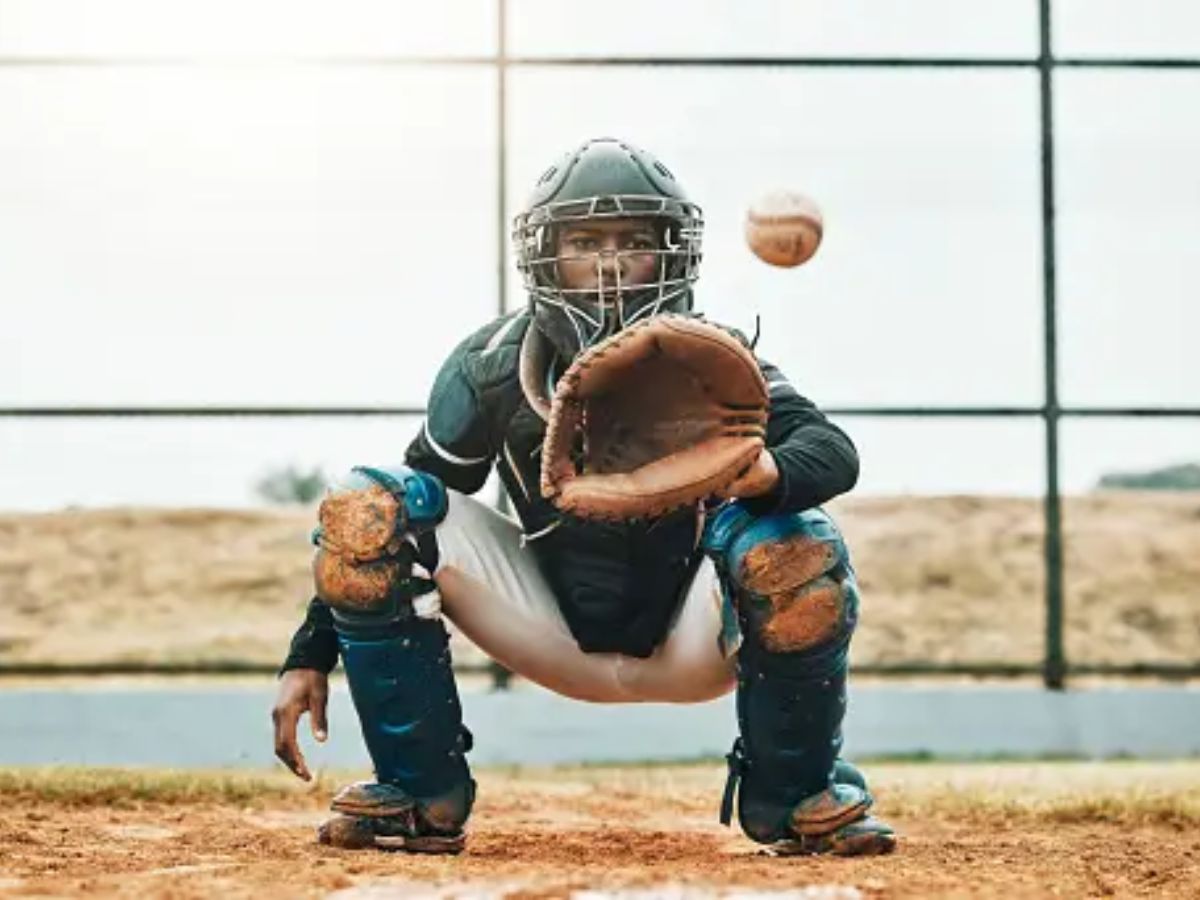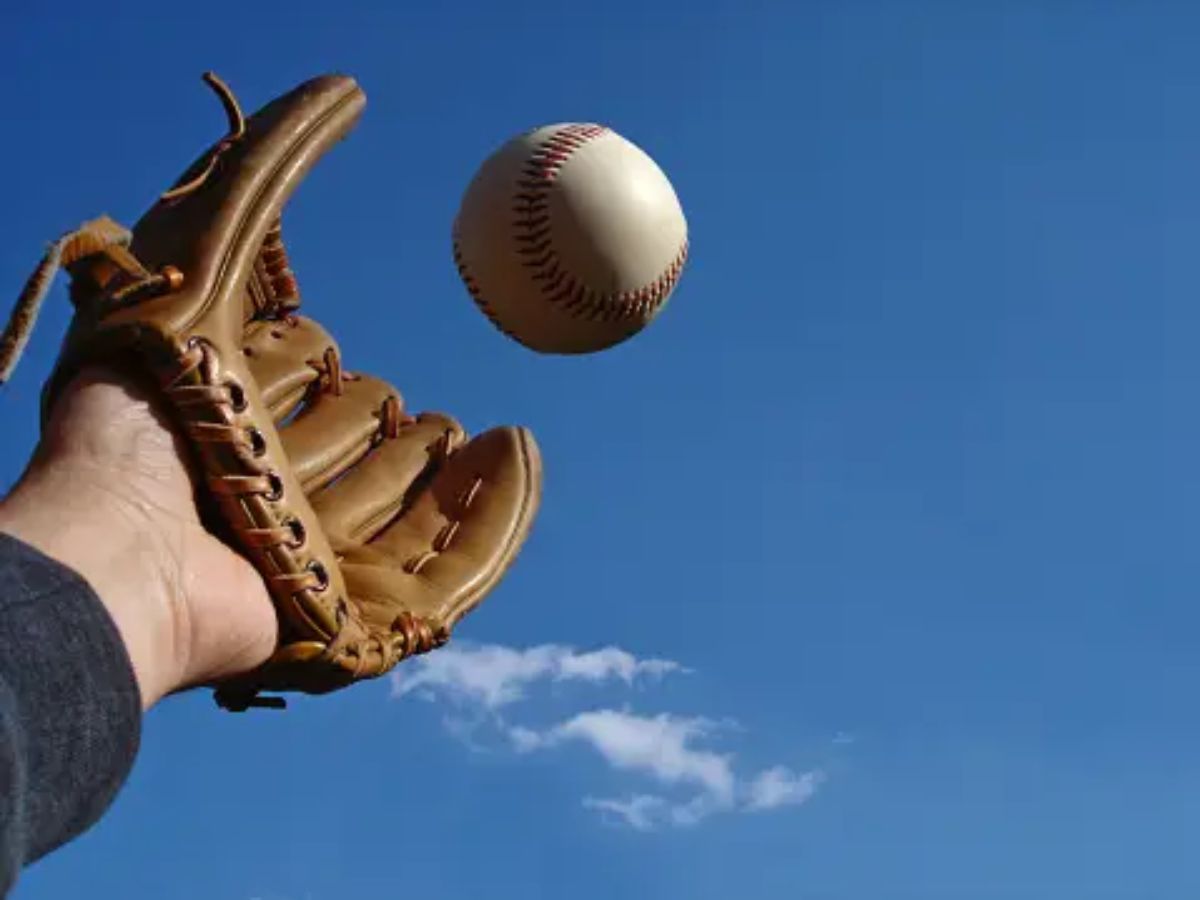
To play catcher, position yourself behind home plate and be ready to catch and throw the ball. Learning how to play catcher is essential for being a key player in the game of baseball.
As the catcher, your role is to receive the ball from the pitcher and make accurate throws to prevent base runners from advancing. This position requires a combination of agility, quick reflexes, and strong communication skills. We will explore the fundamentals of playing catcher, including how to set up behind home plate, receive pitches, block balls in the dirt, and make successful throws.

By mastering these skills, you can become an effective and reliable catcher for your team. So, let’s dive into the details on how to play catcher and enhance your game on the field.
Contents Inside
The catcher plays a crucial role in the game of baseball. They have unique responsibilities that contribute significantly to the overall performance of the team. From a defensive standpoint, the catcher is responsible for calling and managing the pitches, making sure they are in sync with the pitcher.
They also play a vital role in preventing stolen bases, as they are the ones who catch the throws from the infield. Offensively, catchers need to be skilled hitters, as they contribute to the team’s run production. Their ability to make solid contact and drive the ball can be game-changing.
Furthermore, catchers are responsible for controlling the game’s pace and keeping the team focused. Overall, the catcher is an indispensable position that has a direct impact on the outcome of the game.
Understanding the basics of catching in baseball involves mastering the art of framing pitches. An essential aspect of this is maintaining a proper stance and positioning. By adopting the correct posture, catchers can effectively receive and control the ball, enabling them to play their role on the field seamlessly.
The importance of a solid stance cannot be overstated, as it allows catchers to react quickly and efficiently to incoming pitches. Moreover, positioning oneself correctly helps in optimizing the chances of successfully fielding a pitch. By having a strong foundation, catchers enhance their ability to make accurate throws and protect the home plate.
Thus, by honing their skills in this area, catchers can contribute significantly to their team’s success.
Defensive techniques for catchers include mastering blocking pitches to prevent runners from advancing. Catchers must use proper techniques and body positioning to effectively block pitches in the dirt, ensuring they don’t get past them. By getting low, keeping their chest over the ball, and using their shin guards, catchers can minimize the risk of wild pitches and passed balls.
Additionally, catchers need to work on their throwing techniques and develop a strong arm to make accurate and powerful throws when attempting to catch runners stealing or pick off baserunners. Regular practice and repetition are essential to refine these skills and become a proficient catcher.
With dedication and hard work, catchers can ultimately excel in the defensive aspects of their position, benefiting their team’s success.
Mastering the art of pitch calling is vital for playing catcher effectively. To achieve this, it is crucial to develop strategies for effective pitch selection. One key aspect is the ability to communicate with pitchers, ensuring a clear understanding of their strengths and preferences.
Additionally, reading hitters is essential in determining the ideal pitches to call. By observing their stance, swing mechanics, and patterns, a catcher can anticipate their tendencies and adjust accordingly. A varied arsenal of phrases at the beginning of paragraphs adds interest and engagement to the content.

With these strategies in place, catchers can excel in their position, making a significant impact on the outcome of games.
Developing catcher’s instincts is crucial for success in the game. It involves anticipating plays and reacting quickly to make effective plays. By reading base runners, catchers can gain valuable insights to make smart decisions on the field. Catchers should focus on observing runners’ movement and behavior to anticipate their actions.
This allows catchers to position themselves accordingly and be ready for any play. Reacting quickly is essential to prevent stolen bases and make accurate throws to other bases. Catchers must stay alert and agile, constantly adjusting their positioning to ensure they are in the best possible spot to make a play.
Developing these catcher’s instincts takes practice and experience, but they are vital skills for excelling in the position.
Playing catcher requires essential skills for defending the plate, such as quick reflexes and agility. Fielding bunts and pop-ups demand a keen eye and the ability to react swiftly. Being alert and focused allows catchers to make split-second decisions and anticipate plays.
Additionally, catchers should be adept at communicating with their teammates, ensuring a well-coordinated defense. Developing quick reflexes and agility through practice drills and training sessions is crucial for catchers to effectively defend the plate. By mastering these skills, catchers can effectively contribute to their team’s success on the field.
So, grab your glove, put on your gear, and get ready to showcase your abilities as a skilled catcher.
Building mental toughness is crucial for playing the catcher position effectively. Handling pressure situations with confidence is a key aspect of this. Developing leadership skills on the field is also essential. By staying calm and composed, catchers can lead their team and make smart decisions.
Being mentally tough allows catchers to handle difficult situations with a clear mind and make quick, decisive actions. They must remain focused and in control, even when facing challenging pitches or dealing with intense game situations. It takes practice and experience to build mental toughness, but with time and effort, catchers can develop the mindset needed to succeed in this demanding position.
With leadership skills and the ability to handle pressure, catchers can excel and contribute to their team’s success.
To improve conditioning and physical training for catchers, strength and agility exercises that are specific to their role are crucial. These exercises aim to enhance the player’s overall strength and flexibility, enabling them to perform at their best on the field.
Implementing exercises like resistance training, plyometrics, and speed drills helps catchers develop explosive power and quick reflexes required for their position. Moreover, incorporating injury prevention techniques, such as proper warm-ups, stretching routines, and proper rest and recovery, is essential. By paying attention to their body’s needs and addressing any minor injuries promptly, catchers can minimize the risk of long-term damage and ensure their longevity in the game.
Prioritizing conditioning and physical training alongside injury prevention and recovery techniques is key for catchers aiming to excel in their role.
Building a successful catcher-mound relationship requires trust and effective communication. Catchers and pitchers must work together to execute game plans. This collaboration involves understanding each other’s strengths and weaknesses on the field. Clear and concise communication is key in order to respond quickly to situations as they arise during the game.
The catcher needs to establish trust with the pitcher by calling pitches that play to their strengths and being reliable in executing defensive plays. Additionally, the catcher must be able to read the pitcher’s body language and adjust their positioning accordingly.
By developing a strong relationship, catchers and pitchers can effectively work together to outsmart opponents and achieve success on the field.
To become a proficient catcher, consistent practice and continuous improvement are key. Practice drills for blocking, throwing, and receiving can greatly enhance your skills. By focusing on these areas, you can effectively improve your game. Work on your blocking technique, honing your ability to stop balls in their tracks.
Develop your throwing skills, perfecting your aim and velocity. Pay attention to your receiving technique, ensuring you have a strong and secure grasp on incoming pitches. It is crucial to regularly practice these drills to refine your abilities and build muscle memory.
By dedicating yourself to these drills and techniques, you can become a skilled and reliable catcher on the field.
The catcher plays a crucial role in team dynamics, building camaraderie with pitchers and infielders. They contribute to the overall success of the team by providing leadership and support. The catcher communicates with the pitcher, calling signals and guiding game strategy.
They must have a strong bond with the pitcher, understanding their strengths and weaknesses. Catchers also work closely with the infielders, ensuring seamless coordination during defensive plays. This requires trust and effective communication. Building camaraderie with pitchers and infielders fosters a sense of unity within the team, enhancing performance on the field.
The catcher’s role is not just limited to catching pitches; they are an integral part of the team, working together to achieve victory.
Playing catcher requires mastering strategies for advancing in the game and showcasing skills for scouts and coaches. Aspiring catchers should focus on pursuing opportunities at higher levels of play. By honing their defensive skills, catchers can solidify their position on the team and attract the attention of those in the baseball community.

Developing proficient throwing techniques, quick reaction times, and effective communication with pitchers are crucial. Catchers should also strive to enhance their blocking and framing skills, thus providing a solid defense behind the plate. Overall, by consistently improving their abilities as catchers and actively seeking opportunities to showcase their talents, players can increase their chances of future success at higher levels of competition.
Playing catcher in baseball involves positioning yourself behind home plate, wearing the necessary gear, and being ready to catch pitches from the pitcher. You also need to be able to block balls in the dirt, throw out baserunners, and communicate with the rest of the team.
As a catcher, your responsibilities include calling pitches, receiving pitches from the pitcher, blocking balls in the dirt, throwing out baserunners, and communicating with the rest of the team. You are the leader on the field and play a crucial role in the team’s defense.
To be a good catcher, you need strong communication skills, quick reflexes, and the ability to read the opposition’s strategies. You should also have a strong arm for throwing out baserunners, good blocking techniques, and the ability to handle different pitching styles.
Mastering the art of playing catcher is a journey that requires dedication, practice, and a deep understanding of the position’s unique demands. From learning the proper stance and receiving techniques to calling pitches and managing the game, there is no shortage of skills to develop.
By focusing on the fundamentals, honing your communication skills, and consistently working on your agility and reflexes, you can become a formidable force behind the plate. Remember to always stay focused, stay low, and keep your eye on the ball.
As you progress in your journey as a catcher, don’t be afraid to seek advice from experienced coaches and players, as their insights can be invaluable. With diligence and perseverance, you can become a standout catcher who makes a significant impact on every game.
So, grab your mitt, get out on the field, and embrace the challenge of playing catcher – your team is counting on you!
Let’s Build
Contact us todayGet daily tips and tricks for making your best home.
2025 The base Ball Insider